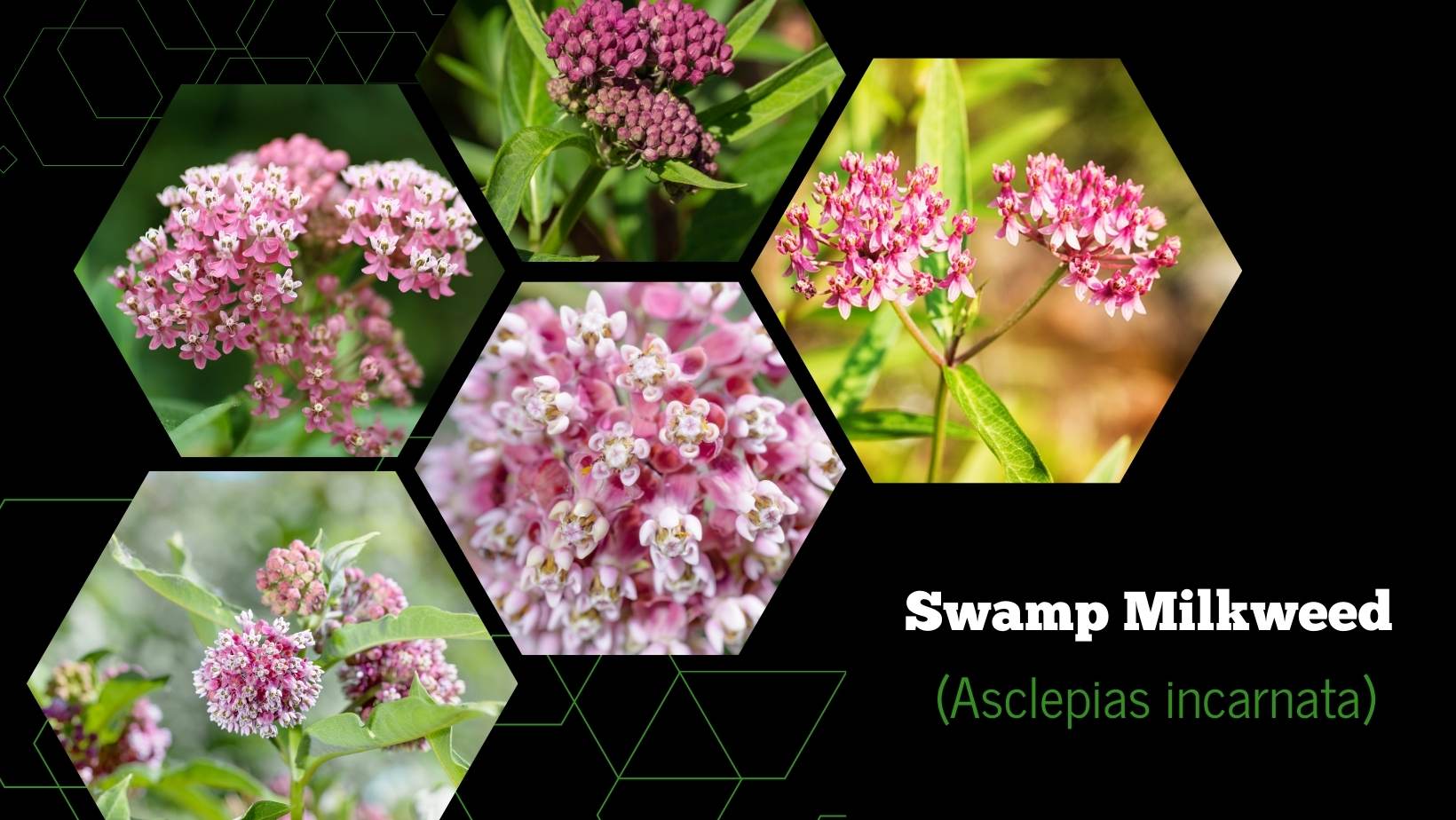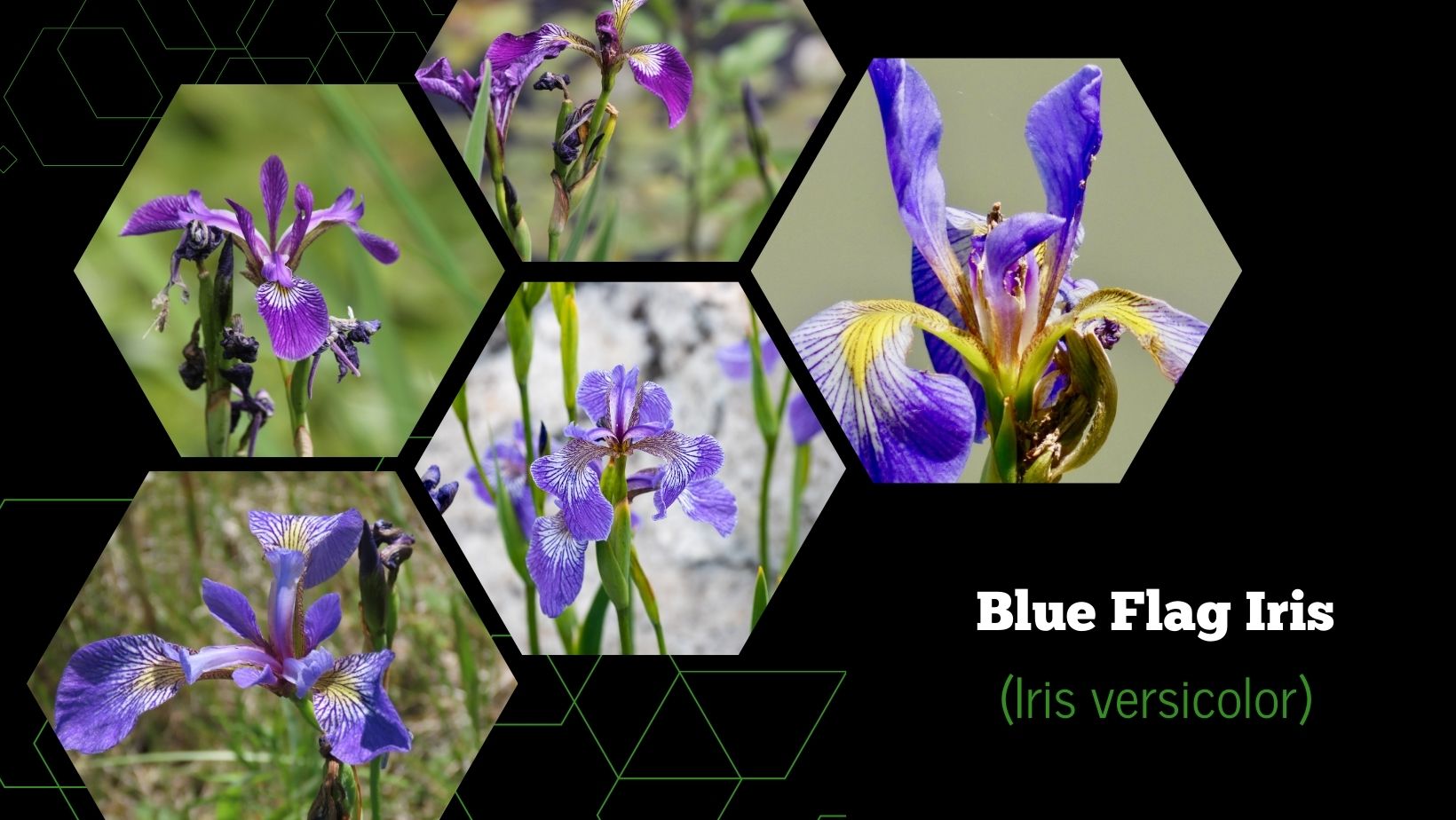Creating a rain garden in Cleveland, Ohio is a wonderful way to manage stormwater runoff while adding beauty to your landscape. Here are 20 plants that are well-suited for a rain garden in this region:
-
Swamp Milkweed (Asclepias incarnata)

- Description: A native perennial with clusters of pink, fragrant flowers. It’s a vital nectar source for butterflies.
- Growing Tips: Prefers full sun to light shade and moist to wet soil.
- Benefits: Provides food and habitat for butterflies, and helps filter pollutants from runoff.
-
Blue Flag Iris (Iris versicolor)

- Description: A striking, blue-flowered native perennial with sword-like leaves.
- Growing Tips: Thrives in full sun to partial shade, in consistently moist soil.
- Benefits: Helps stabilize soil, provides habitat for frogs and other wildlife.
-
Joe-Pye Weed (Eutrochium purpureum)
- Description: A tall, native perennial with large, pinkish-purple flower clusters.
- Growing Tips: Prefers full sun to light shade and moist to wet soil.
- Benefits: Attracts butterflies, bees, and other pollinators.
-
Cardinal Flower (Lobelia cardinalis)
- Description: Vibrant red, tubular flowers on tall stems.
- Growing Tips: Enjoys partial shade to full sun, in consistently moist soil.
- Benefits: Attracts hummingbirds and butterflies, and aids in soil stabilization.
-
Turtlehead (Chelone glabra)
- Description: Clusters of unique, white, snapdragon-like flowers.
- Growing Tips: Grows well in partial shade to full sun, and prefers consistently moist soil.
- Benefits: Attracts butterflies and provides nectar.
-
Virginia Bluebell (Mertensia virginica)
- Description: Bell-shaped, sky-blue flowers on arching stems.
- Growing Tips: Thrives in partial to full shade, in consistently moist soil.
- Benefits: Adds early spring color, and is a valuable nectar source.
-
Bottlebrush Sedge (Carex comosa)
- Description: Dense clumps of grass-like foliage with unique seed heads.
- Growing Tips: Prefers partial to full shade and consistently moist soil.
- Benefits: Provides habitat for birds and small mammals.
-
Blue Lobelia (Lobelia siphilitica)
- Description: Spikes of vibrant blue flowers.
- Growing Tips: Grows well in partial shade to full sun, and prefers consistently moist soil.
- Benefits: Attracts hummingbirds and butterflies.
-
Sneezeweed (Helenium autumnale)
- Description: Bright yellow or orange daisy-like flowers.
- Growing Tips: Enjoys full sun, in consistently moist to wet soil.
- Benefits: Provides late-season nectar for pollinators.
-
Black-Eyed Susan (Rudbeckia hirta)
- Description: Classic daisy-like flowers with dark centers.
- Growing Tips: Thrives in full sun, in well-draining to consistently moist soil.
- Benefits: Attracts butterflies and other pollinators.
-
Columbine (Aquilegia canadensis)
- Description: Unique, red and yellow, spurred flowers on delicate stems.
- Growing Tips: Prefers partial shade to full sun, and well-draining soil.
- Benefits: Provides nectar for hummingbirds.
-
Cinnamon Fern (Osmunda cinnamomea)
- Description: Tall, feathery fronds with a cinnamon-colored central stem.
- Growing Tips: Grows well in partial shade to full shade, in consistently moist soil.
- Benefits: Adds structural interest and stabilizes soil.
-
Wild Bergamot (Monarda fistulosa)
- Description: Clusters of lavender-pink tubular flowers.
- Growing Tips: Enjoys full sun to light shade, in well-draining to consistently moist soil.
- Benefits: Attracts bees, butterflies, and hummingbirds. Has aromatic foliage.
-
Golden Ragwort (Packera aurea)
- Description: Clusters of bright yellow, daisy-like flowers.
- Growing Tips: Grows well in partial shade to full shade, and consistently moist soil.
- Benefits: Provides early-season nectar for pollinators.
-
Blue Vervain (Verbena hastata)
- Description: Tall spikes of tiny, purplish-blue flowers.
- Growing Tips: Prefers full sun to light shade, and consistently moist soil.
- Benefits: Attracts a variety of pollinators.
-
Sweet Flag (Acorus calamus)
- Description: Graceful, sword-like leaves with a pleasant fragrance.
- Growing Tips: Thrives in full sun to partial shade, in consistently moist to wet soil.
- Benefits: Helps stabilize soil, provides habitat for wildlife.
-
Golden Alexander (Zizia aurea)
- Description: Umbels of small, yellow flowers on tall stems.
- Growing Tips: Grows well in partial shade to full sun, and prefers consistently moist soil.
- Benefits: Attracts a variety of pollinators.
-
Bee Balm (Monarda didyma)
- Description: Showy clusters of red, pink, or purple tubular flowers.
- Growing Tips: Enjoys full sun to light shade, in well-draining to consistently moist soil.
- Benefits: Attracts bees, butterflies, and hummingbirds.
-
Goldenrod (Solidago spp.)
- Description: Plumes of bright yellow flowers on tall stems.
- Growing Tips: Thrives in full sun, in well-draining to consistently moist soil.
- Benefits: Provides late-season nectar for pollinators.
-
New England Aster (Symphyotrichum novae-angliae)
- Description: Profuse clusters of purple, daisy-like flowers.
- Growing Tips: Prefers full sun, in well-draining to consistently moist soil.
- Benefits: Attracts butterflies and other pollinators.
Remember to consider the specific conditions of your rain garden, such as sun exposure and soil moisture levels, when selecting and placing these plants. Regular maintenance, such as weeding and watering during dry spells, will help ensure a thriving rain garden that benefits both the environment and local wildlife.




